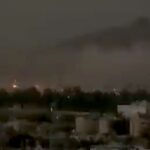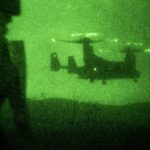The Afghan National Security Forces (ANSF) have successfully repelled the Taliban’s assault on Kunduz, Afghanistan’s second largest city. The Afghan government announced that the ANSF have killed at least 36 Taliban fighters and cleared the city from any residual enemy presence. The recent assault was the third Taliban attack on Kunduz in the last four years. The militants briefly captured the city for two weeks in 2015 and 2016 respectively.
What happened?
The Taliban offensive commenced on Saturday, August 30, at 2 am local time, when more than 50 militants attacked Kunduz from three different directions. The deadly night raid, in which the Taliban seized several governmental buildings, took local authorities by surprise. The hardline Islamists claim that they have killed more than 40 Afghan forces, seized 11 vehicles, and captured a number of weapons. Afghan commandos, backed by their debuting air force, averted the Taliban’s advance towards the city center.
On Saturday evening, a suicide bomber struck a press confernece of the Afghan police at a busy roundabout. The public address was meant to debunk claims that the Islamists had taken the city center. The suicide attack killed the police spokesman and ten Afghan soldiers, including a senior colonel. Top US commander General Austin Miller as well as the Afghan ministers of interior and defense landed in Kunduz shortly before the suicide attack, in an effort to boost morale.
While the offensive was repelled, Afghan authorities have stated that clearance operations are still underway. Many Taliban fighters have holed up in civilian houses and continue to present an immediate threat.

Why now?
Attacks like the Kunduz offensive strengthen the Taliban’s position in the ongoing peace negotiations with the US in Doha (Qatar). The Taliban are presently at their strongest since 2001. The Islamists control nearly half of the Afghan territory and contest a large number of districts.
Profiting from the poor state of the ANSF and Afghan National Army, the Taliban have intensified attacks on urban centers in the past two years. With each successful attack, the Islamists gain confidence to expand their operations from remote mountain areas to densely populated areas. Many Taliban factions are still convinced that they can win the war by military means and do not need political talks with the US.
Despite the ongoing wave of violence, the US Special Presidential Envoy for Afghanistan recently stated that a peace agreement with the Taliban is imminent. As the Taliban’s primary condition for negotiations is the withdrawal of all foreign forces from Afghanistan, it is virtually certain that the nearly 20,000 US and NATO troops are preparing to leave the country. Washington hopes that appeasing the Islamist group will pave the way for direct negotiations between Kabul and the Taliban. However, the withdrawal of US forces from Afghanistan will likely leave the fragile ANSF and ANA at the Taliban’s mercy.
- Russia Bombs Maternity Ward & Children’s Hospital in Mariupol As Part of Siege - 10 March 2022
- T-Intell’s OSINT Training Marks One Year Anniversary - 18 November 2021
- IS-K Never Left the Battlefield - 27 August 2021





